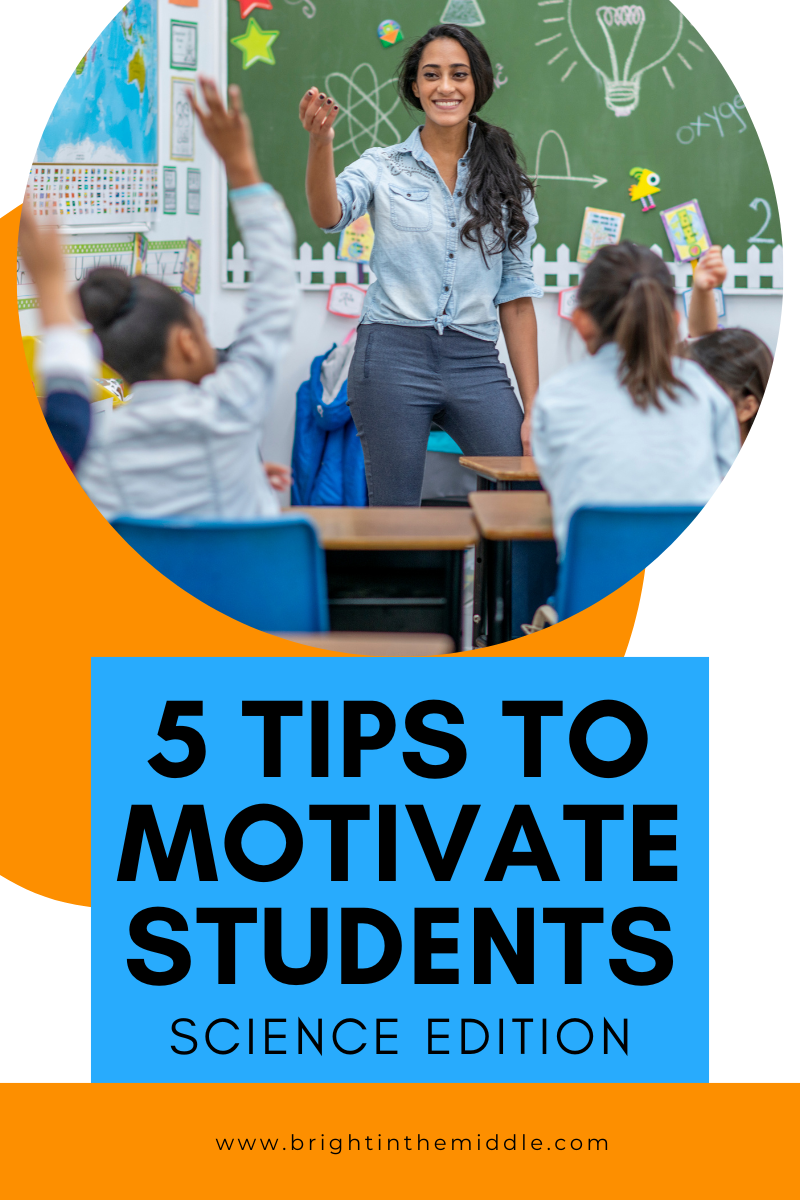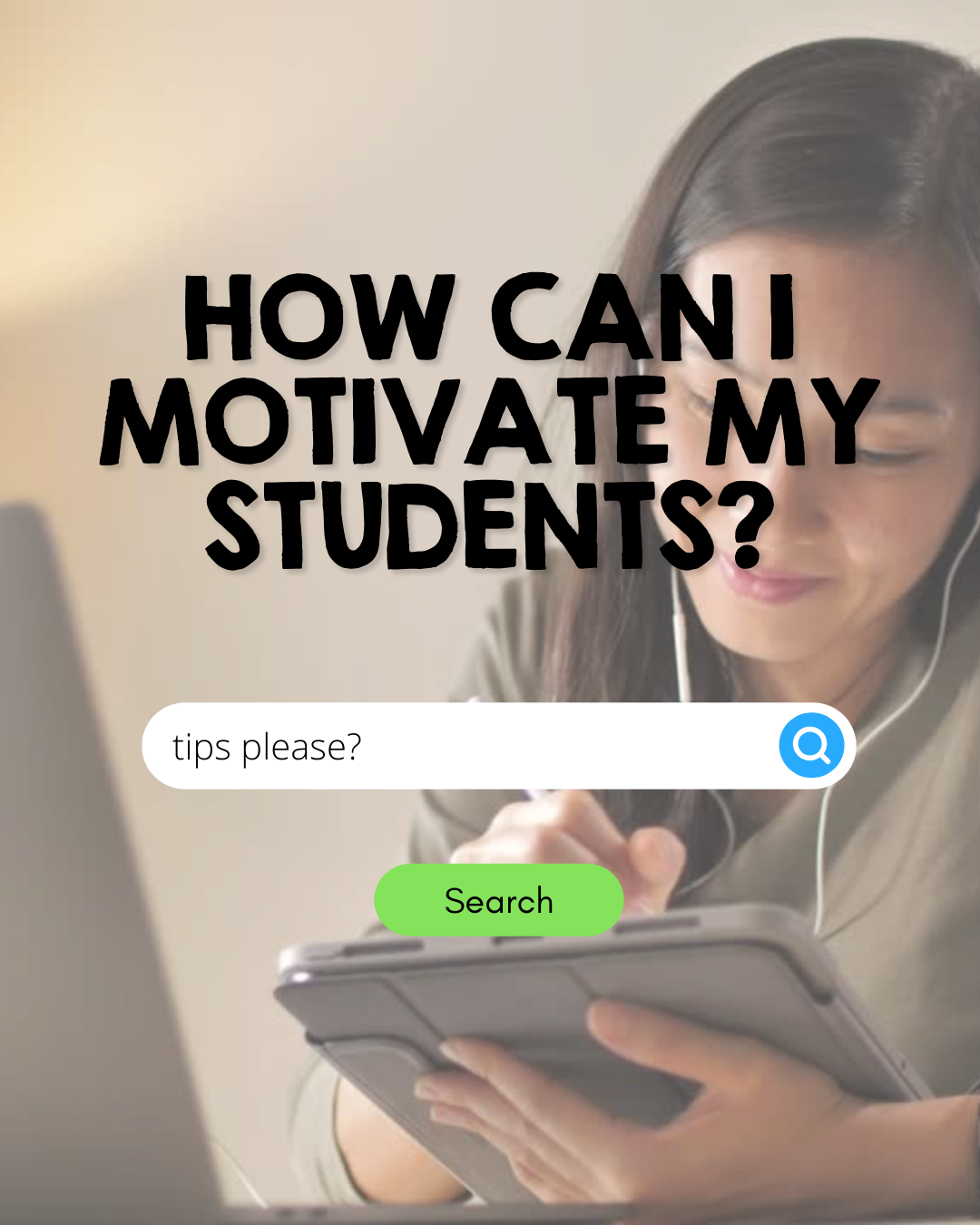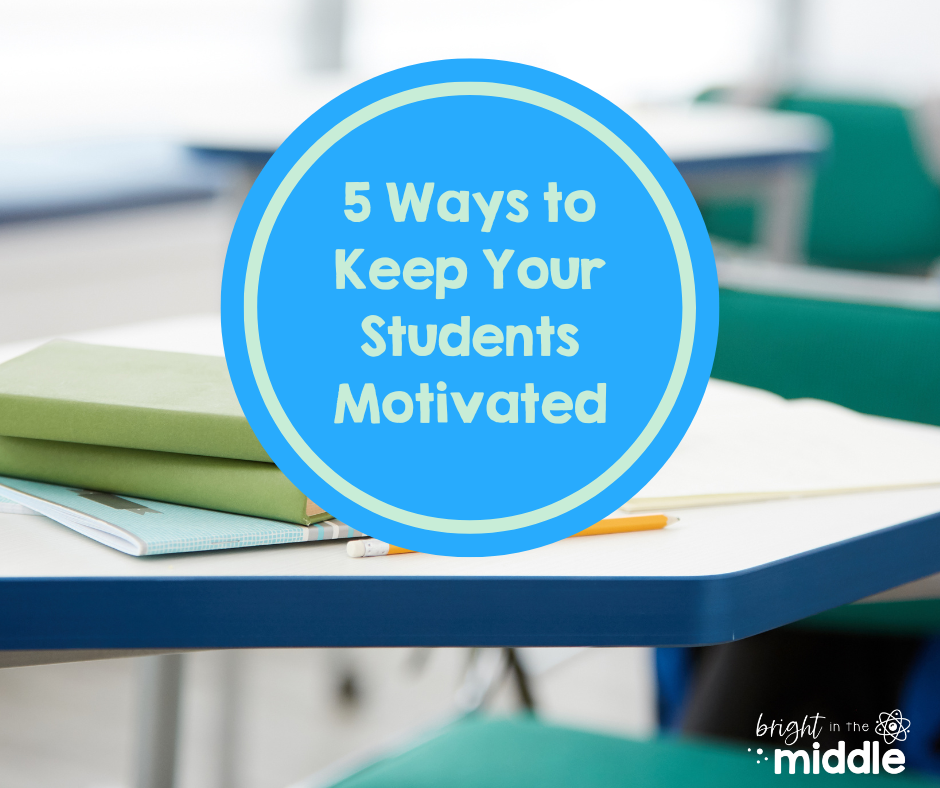What motivates a student to jump into science with excitement. It’s not only the awesome experiments (although those are great) – it’s all about giving them some freedom, throwing in some surprises, helping them make those “aha” moments, and more!
You’ve been there, I’m sure, because I know I have. You are teaching away, and you just look around the room, and the students are just out of it. So, what do teachers do? You pivot. You decide to come up with the best possible plan to help motivate your students!
I’m all about bringing the WOW Factor to motivate students in the middle school science classroom, and there are some strategies inside the WOW Factor that can make this happen.
What motivates a student? What are some of these strategies? Read more below for 5 things you can add to your go-to engagement strategies today!

Leave Students in Charge
I got your attention, didn’t I? Well, what I mean is that you should allow students to have some control in their learning. When students are in control, they are more engaged in their own learning.
So, what could this look like? You just need to incorporate student choice into your classroom.
Here are some examples:
- Maybe you’re doing something like this Earth Layer’s activity. Although the activity is the same for everyone, a writing assignment, you can give students a choice of which writing prompt they want to use.
- Another example is that you could use a Choice Board. Let’s say you are letting students create a project about the human body systems. You could give them the option to create a poster, a skit, a presentation, a brochure, or any other type of presentation format.
- You can even do something as simple as allowing them to choose certain problems to complete on a worksheet, such as the choice between completing the even or the odd-number problems.
Make it a Competition
There is almost nothing more motivating than competition, especially when it comes to middle school students. I mean, who doesn’t love to win?
A friendly and fun competition will help boost students’ effort and their engagement in class.
Here are some examples:
- Using any review game that involves individual players or groups will work perfect. You can have students compete to win small privileges such as being the boss of the next brain break activity you do, choosing which seat they can sit in the next day, a warm-up pass, or anything of this sort. You can also give candy prizes. They will take all of the candy!
- If students are completing a project, you can give them a prize of 1st, 2nd, or 3rd place. You can choose “surprise guests” such as other teachers, district staff, or parent volunteers to cast their vote.
- Another thing you can do is make a pre-assessment a challenge. Tell students to create a KWL – Give them one minute to write as many things as possible that they know about the topic in one minute!
The competitions don’t even have to end in a prize. Sometimes, just the competition of it is motivating! No other external motivators needed!

Bring in Some Surprise External Motivators!
Internal motivation is great, but bringing in more external motivators, and making them a surprise is a whole new fabulous level!
If you randomly give students a reward when they are least expecting it, it can spark those happy feelings and be a great encouragement!
Here are some examples:
- Let’s say that your students all walked in quietly and began working on their science warm-up without being asked. You can tell them that usually, you don’t reward them for already doing what they are supposed to, but today, you want to treat them to a few minutes of free time at the end of the class period. This will motivate them to always be on their best behavior and probably earn you more engagement throughout the class so that free time doesn’t get taken away!
- You can also motivate students by giving individual surprise rewards when a student is being exceptional. Say during a lab, you have one student that goes above and beyond to help their group. Give them some candy!
- Give a “just because” prize. Just tell them that you are so happy to see them today, and surprise them with donuts. This could help create a positive environment in your classroom, add to rapport, and increase their intrinsic motivation to do better in your class!
Make it Matter
What’s the question that gets asked multiple times a year for probably as long a school has been a thing? “When are we ever going to use this?”. So, whenever you are teaching, make sure to show them! This can motivate them to want to learn more. Find out what piques their interest.
Here are some examples:
- When teaching about the periodic table and/or chemical reactions, share the chemistry of cookies with your students. You can even bring this into your infectious disease unit. You have to know how high to set the oven to kill that salmonella! Make it more engaging…bring some cookies!
- Bring in a special guest! Have someone local that can help explain real-world applications to certain topics. Do you have a water-treatment specialist that makes sure their water is clean to drink? Do you have a local musician that can help explain sound waves? The options are endless and fun!
- Do you have a classroom with a majority of boys? Connect your force and motion to whatever sport they are into. Ok, I know, I said boys. But really, I love football! So, whatever your students, girls and boys, are into!
Personal Stories
I love story telling in the classroom! I used to have a college professor that would be in the middle of giving a lecture and just randomly break out in a story about her weekend. It was a nice brain break, interesting to listen to, and kept me motivated for the rest of the class. I’m pretty sure she broke out in a story every time she thought she was losing us.
The stories you tell don’t have to be random. They can be related to the content. Also, they don’t have to be your stories. You can let the students share their own stories!
Here are some examples:
- If you are teaching about weather, you can have your students share out about a time that they’ve been impacted by a storm or other severe weather event.
- You can always share a story about a time that “gravity got you down”, and you had a glorious fall.
- Have the principal come in a share a random story. Maybe he/she had a adventure going skydiving and can tell students how cold the upper troposphere is!
This can be so much fun and motivating for a student!
So, what motivates a student? There can be a lot of things. I hope you find the tips above helpful and can implement them into your classroom right away!



[…] Looking for ways to motivate your students? […]